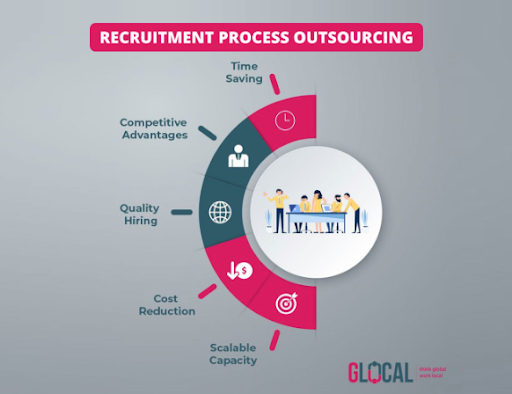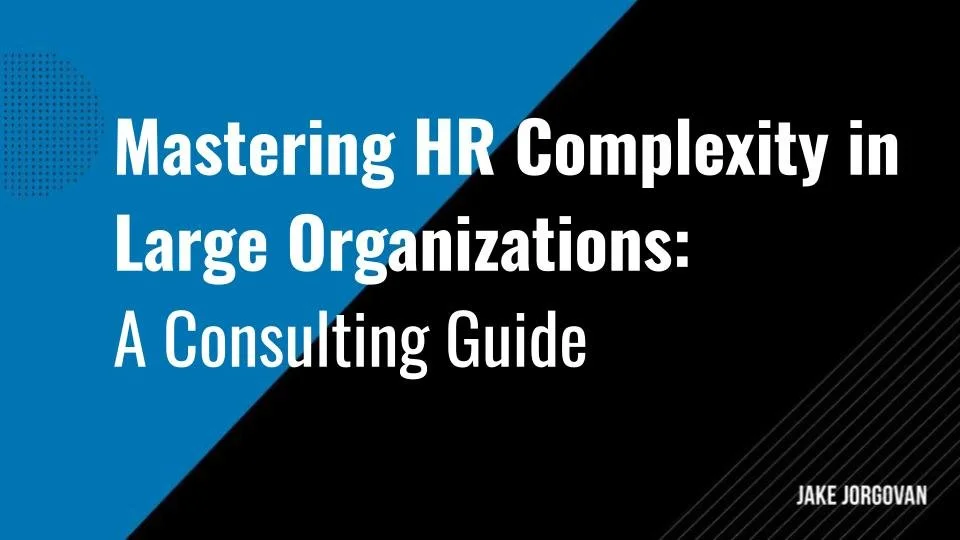Measuring the Success of RPO (Recruitment Process Outsourcing): Key Performance Indicators and ROI Analysis for Businesses
Many companies struggle with finding and retaining talent. You, too, may face high turnover rates and sunk costs in your recruitment efforts.
This is where Recruitment Process Outsourcing (RPO) steps in as a game-changer.
However, quantifying the success of RPO initiatives can be just as challenging without the right metrics.
Luckily, this article will cover:
The fundamentals of RPO success
Key Performance Indicators (KPIs) for RPO
ROI analysis for RPO
Keep reading to ensure your investments are truly paying off.
Understanding RPO Success
Defining success in Recruitment Process Outsourcing (RPO) encompasses cost efficiency, quality of hire, and strategic alignment with business goals. Success criteria vary by organization but fundamentally require a balance between immediate operational benefits and long-term strategic value.
Let’s review these factors:
Operational Efficiency: RPO aims to streamline recruitment processes, making them more efficient and scalable. Therefore, you can quantify success through metrics such as time-to-hire and cost-per-hire. Efficient processes are characterized by swift, cost-effective recruitment cycles that do not compromise quality.
Strategic Alignment: RPO's success also hinges on its alignment with your company’s strategic vision. This includes supporting business growth, enhancing employer branding, and improving workforce diversity. Effective RPO strategies are integrated with your company's broader HR and business objectives, contributing to long-term sustainability and competitive advantage.
Cost-Effectiveness: While operational efficiency focuses on the process, cost-effectiveness evaluates the financial impact. That means you should analyze the return on investment (ROI) from outsourcing recruitment activities, including savings from reduced reliance on external agencies and more efficient use of internal resources.
Adaptability and Scalability: An RPO solution's ability to adapt to changing business needs and scale in response to fluctuating recruitment volumes is a key indicator of its success. This flexibility supports business agility, allowing you to navigate growth phases and market fluctuations efficiently.
Stakeholder Satisfaction: The satisfaction levels of key stakeholders, including hiring managers, candidates, and senior management, indicate RPO success. Positive feedback from these groups suggests that the RPO meets or exceeds expectations regarding process efficiency, candidate quality, and strategic value.
Now that you know which factors to follow, let’s see the corresponding KPIs to keep track of.
Key Performance Indicators for RPO
To assess the efficacy of Recruitment Process Outsourcing, monitor specific key performance indicators that reflect various aspects of the recruitment process. Below, we've provided definitions and measurement techniques for each KPI.
Time-to-Hire
Time-to-hire measures the elapsed time from when a job requisition is officially opened to when a candidate accepts a job offer. It's pivotal for assessing the speed and responsiveness of the RPO provider.
A shorter time-to-hire correlates with a more efficient recruitment process, reducing the cost of vacancies and ensuring critical roles are filled swiftly. Additionally, it enhances the candidate experience, as prolonged processes can deter top talent.
How to Measure:
Track Dates Accurately: Implement a robust Applicant Tracking System (ATS) to automatically record the date when the job requisition is opened and the date when the candidate accepts the job offer.
Calculate Duration: Use the ATS to automatically calculate the number of days from requisition to acceptance for each hire.
Average Time-to-Hire: Analyze the data to calculate the average duration across all hires over a specific period.
Quality of Hire
This KPI assesses new hires' immediate and long-term contributions to the company, focusing on performance, integration into company culture, and retention. High-quality hires significantly impact organizational performance because they drive productivity and innovation. Besides, they tend to have higher engagement levels, which supports a positive workplace culture and reduces turnover rates.
How to Measure:
Performance Metrics: Establish a standard performance evaluation metric for all new hires and compare their scores against the established benchmark within their first year.
Retention Rates: Track the percentage of new hires who stay with the company for at least one year, identifying patterns of early turnover.
Hiring Manager Satisfaction: Develop a detailed survey for hiring managers to assess their satisfaction with each new hire’s performance and their integration into the team, using a numerical rating system for consistency.
Cost per Hire
Cost per hire calculates all expenses related to the recruitment process divided by the total number of hires, offering insights into your hiring practices' efficiency and financial impact. Understanding this metric helps you optimize your recruitment spend because you can identify areas where you can reduce costs without compromising the quality of hires. You can also better budget for future recruitment needs.
How to Measure:
Total Recruitment Cost: Catalog all recruitment-related expenses, including advertising, agency fees, employee referrals, recruiter salaries, and technology costs.
Number of Hires: Count all successful hires made within the same timeframe as the costs were incurred.
Average Cost per Hire: Divide the total recruitment cost by the total number of hires to ascertain the average price.
Hiring Manager Satisfaction
This qualitative KPI gauges your hiring managers' satisfaction with the recruitment process, from the quality of candidates to the speed and communication of the RPO provider. High satisfaction levels among hiring managers indicate that the RPO effectively aligns with your organization's needs and expectations, fostering stronger internal partnerships. It also suggests that the recruitment process is structured to support hiring managers' goals, leading to better hiring decisions.
How to Measure:
Surveys and Interviews: You can conduct both structured surveys and informal interviews with hiring managers to gather detailed feedback on the recruitment process and the quality of hires.
Scoring System: Implement a 5-point Likert scale to quantitatively assess satisfaction in key areas such as speed of hire, quality of candidates, and communication.
Actionable Feedback: Use the survey and interview data to identify specific areas for improvement and develop actionable strategies to address these areas.
Applicant Satisfaction
Applicant satisfaction evaluates the candidate's experience throughout the recruitment process, which can reflect on your company's employer brand and attractiveness to future talent. A positive candidate experience, even for those not ultimately hired, can increase brand advocacy and help you get a larger, more qualified talent pool in the future. It also reduces the likelihood of negative feedback on social platforms, preserving your company's reputation.
How to Measure:
Candidate Surveys: Distribute surveys at various stages of the recruitment process, including post-application and post-interview, to gauge your candidates’ perceptions and experiences.
Net Promoter Score (NPS): Include an NPS question in post-process surveys to measure the likelihood of candidates recommending your company as an employer to others.
Feedback Analysis: Use text analysis tools to analyze survey responses and identify common themes and areas for improvement, focusing on communication, process transparency, and overall experience.
Diversity and Inclusion Metrics
These metrics assess your organization's effectiveness in creating a diverse and inclusive workforce, starting with the recruitment process. A diverse workforce unites a wide array of perspectives, fostering innovation and better decision-making. Additionally, it enhances your company's image as an inclusive employer, makes it attractive to a broader range of candidates, and aligns with global social responsibility goals.
How to Measure:
Diverse Candidate Pool: Analyze application data to track the diversity of the candidate pool, including gender, ethnicity, age, and other relevant demographics.
Hiring Diversity: Monitor the diversity of new hires to ensure that recruitment practices are aligned with your company's diversity and inclusion goals.
Inclusion Initiatives: Evaluate the effectiveness of diversity and inclusion programs by tracking participation rates and feedback from new hires, focusing on initiatives designed to support their integration and success within the company.
ROI Analysis for RPO
Return on Investment (ROI) analysis helps you understand the financial and strategic value derived from RPO initiatives. In this section, we dive deep into the methodologies for calculating and interpreting ROI from RPO, highlighting quantitative and qualitative aspects.
We will also discuss the importance of benchmarking and comparative analysis in contextualizing RPO performance.
Let’s start.
Conceptualizing ROI in RPO
ROI in the context of RPO goes beyond mere cost savings because it includes improvements in hiring quality, efficiency, and strategic alignment with business objectives. To conceptualize ROI, consider both direct and indirect returns. Direct returns include measurable cost reductions and efficiency gains, while indirect returns encompass qualitative improvements like brand enhancement and employee engagement.
Quantitative ROI Measures
Here are some quantifiable metrics to measure RPO ROI, with formulas you can use straight away:
Calculating Cost Savings
Begin by quantifying the reduction in direct hiring costs pre and post-RPO implementation. This includes savings from reduced reliance on external agencies, lower advertising costs, and more efficient use of internal resources.
Formula: Cost Savings = Pre-RPO Costs − Post-RPO Costs
Efficiency Gains
Measure improvements in key performance indicators such as time-to-hire and cost-per-hire. Quantify the financial impact of these efficiencies by correlating them with productivity gains and reduced vacancy periods.
Formula: Gain Value = Improvement in KPI × Financial Impact per Unit
Employee Turnover Reduction
Calculate the cost avoidance achieved through higher retention rates among new hires sourced through RPO. Costs associated with turnover include recruitment, onboarding, and lost productivity.
Formula: Turnover Reduction = Turnover Cost Pre-RPO − Turnover Cost Post-RPO
Qualitative ROI Measures
Improved Employer Branding: Assess the impact of RPO on employer branding through surveys and market analysis. Though qualitative, the enhanced reputation can be linked to a broader and more qualified candidate pool, contributing to long-term recruitment success.
Employee Engagement and Productivity: Use surveys and performance data to gauge employee engagement and productivity improvements from more strategic and culturally aligned hires. While more challenging to quantify, these factors significantly contribute to your business’ performance.
Cultural Fit and Alignment: Evaluate the alignment between new hires’ values and the organizational culture. Improved alignment can enhance teamwork, reduce conflict, and foster a more cohesive work environment, indirectly contributing to organizational success.
Benchmarking and Comparative Analysis
To fully understand the ROI of RPO, benchmark against industry standards and historical performance.
Industry Benchmarks: Compare your RPO outcomes with industry averages or benchmarks to evaluate competitiveness and effectiveness. This can help identify areas of strength and opportunities for improvement.
Historical Comparison: Analyze trends in your organization’s recruitment metrics before and after RPO implementation. This longitudinal analysis helps isolate the impact of RPO from other variables.
Continuous Improvement: Use the insights from benchmarking and comparative analysis to refine your RPO strategy continuously. This might involve adjusting the focus areas of the RPO provider, redefining KPIs, or reallocating resources to maximize ROI.
As you can see, ROI analysis for RPO incorporates tangible cost savings and less tangible, qualitative benefits. Understanding and applying these analytical techniques lets you make informed decisions about your RPO investments. The main advantage is that you can ensure alignment with broader business objectives and maximize the value derived from these partnerships.
Measure the Success of RPO with Confidence
In this article, we've explored the vital role that KPI and ROI analysis play in gauging the success of RPO for businesses. We've broken down how these tools offer a clear view of the effectiveness and value of RPO services.
To recap, you must focus on tracking specific KPIs like time to hire, cost per hire, and the quality of hire, alongside conducting a thorough ROI analysis. These measures will help you understand the efficiency of your recruitment process and its impact on your company's bottom line.
Remember, the journey to optimizing your recruitment strategy through RPO is continuous and each company is different, so pick the right metrics to realize the full potential of your RPO partnership.






















